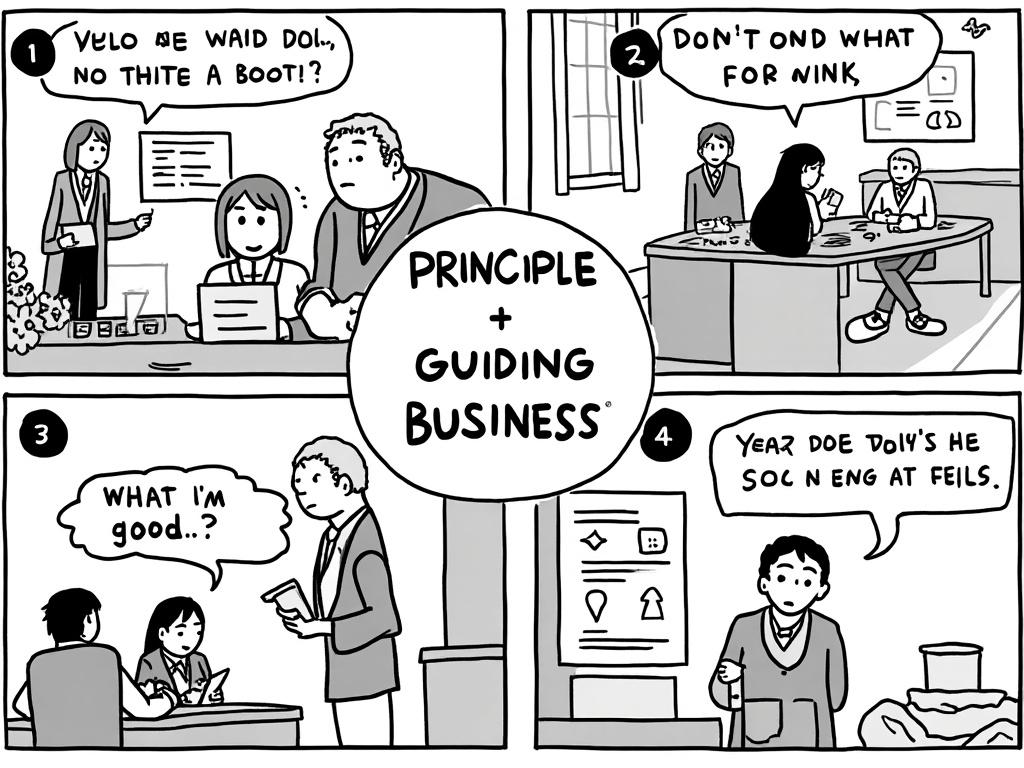
Lessons from Warren Buffett’s Investment Strategy: Timeless Wisdom for Modern Investors
Reading time: 12 minutes
Ever wondered how Warren Buffett turned $11,000 into over $100 billion? You’re not alone. Let’s decode the Oracle of Omaha’s legendary investment philosophy and discover how his time-tested principles can transform your financial future.
Key Investment Insights:
- Understanding value investing fundamentals
- Building long-term wealth systematically
- Avoiding common investment pitfalls
Well, here’s the straight talk: Successful investing isn’t about picking the next hot stock—it’s about disciplined, strategic thinking that compounds over decades.
Table of Contents
- The Core Principles That Built Berkshire Hathaway
- Mastering Value Investing: Beyond the Basics
- Portfolio Construction Strategies
- Avoiding Investment Landmines
- Applying Buffett’s Wisdom Today
- Frequently Asked Questions
- Your Investment Mastery Roadmap
The Core Principles That Built Berkshire Hathaway
Warren Buffett’s success stems from unwavering adherence to fundamental principles that many investors overlook in their pursuit of quick gains. His approach, refined over six decades, centers on three pillars that have delivered consistent results.
The Circle of Competence Philosophy
Buffett famously avoids investments he doesn’t understand—a principle that saved him from the dot-com crash of 2000. “I don’t invest in tech stocks because I don’t understand them,” he stated, while tech-heavy portfolios lost 78% of their value.
Quick Scenario: Imagine you’re considering investing in cryptocurrency. Buffett’s approach would ask: Do you understand blockchain technology? Can you evaluate mining costs? Do you grasp regulatory implications? If not, stay within your circle of competence.
This philosophy extends beyond individual stocks to entire sectors. Buffett’s major holdings include:
- Apple (AAPL): 45.6% of Berkshire’s portfolio
- Bank of America (BAC): 13.2% allocation
- Coca-Cola (KO): Held for over 30 years
- American Express (AXP): 60+ year relationship
The Moat Concept: Sustainable Competitive Advantages
Buffett seeks companies with economic moats—barriers that protect profits from competitors. He identifies four primary moat types:
Buffett’s Economic Moat Visualization
85% – Coca-Cola, Apple
78% – American Express
72% – GEICO Insurance
69% – Utilities
Mastering Value Investing: Beyond the Basics
Value investing isn’t simply buying cheap stocks—it’s about identifying intrinsic value and purchasing quality businesses at significant discounts. Buffett’s mentor, Benjamin Graham, laid the foundation, but Buffett evolved the strategy.
The Intrinsic Value Framework
Buffett calculates intrinsic value using discounted cash flow analysis, but his approach differs from academic models. He focuses on:
| Metric | Buffett’s Focus | Industry Average | Why It Matters |
|---|---|---|---|
| Return on Equity | 15%+ consistently | 8-12% | Indicates management efficiency |
| Debt-to-Equity | Under 0.3 | 0.5-0.8 | Reduces financial risk |
| Profit Margins | Expanding/Stable | Declining | Shows pricing power |
| Free Cash Flow | Growing 5%+ annually | Volatile | Funds future growth |
| Management Quality | Owner-oriented | Variable | Determines execution |
The Buy-and-Hold Strategy
Buffett’s average holding period exceeds 10 years, contrasting sharply with the average investor’s 11-month holding period. This patience allows compound interest to work its magic.
Case Study: Coca-Cola Investment
In 1988, Buffett invested $1.3 billion in Coca-Cola when the stock was undervalued due to market concerns. Today, that position is worth over $25 billion, generating annual dividends exceeding his original investment. The key factors:
- Global brand recognition: 94% worldwide awareness
- Distribution network: 200+ countries
- Pricing power: Consistent margin expansion
- Management stability: Predictable leadership
Portfolio Construction Strategies
Buffett’s portfolio construction defies conventional wisdom about diversification. While modern portfolio theory suggests holding 20-30 stocks, Berkshire Hathaway’s top 10 holdings represent 80% of its equity portfolio.
Concentration vs. Diversification
“Diversification is protection against ignorance,” Buffett explains. “It makes little sense if you know what you are doing.” His concentrated approach requires deep analysis but offers superior returns when executed correctly.
Practical Roadmap for Portfolio Construction:
- Core Holdings (60-70%): 3-5 high-conviction stocks
- Satellite Positions (20-30%): 5-10 opportunities
- Cash Reserve (10-20%): Opportunistic deployment
Avoiding Investment Landmines
Buffett’s success stems partly from avoiding common mistakes that destroy wealth. His contrarian approach often puts him at odds with popular sentiment.
The Psychology of Market Timing
During the 2008 financial crisis, while others panicked, Buffett invested $5 billion in Goldman Sachs and wrote his famous “Buy American. I Am.” op-ed. The S&P 500 was at 1,200; today it trades above 4,500.
Pro Tip: The right preparation isn’t just about avoiding problems—it’s about creating systematic approaches that capitalize on market volatility.
Emotional Discipline Framework
Buffett’s emotional discipline stems from systematic processes:
- Predetermined criteria: Never deviate from investment standards
- Long-term perspective: Focus on 10-year business prospects
- Contrarian mindset: “Be fearful when others are greedy”
- Patience cultivation: Wait for exceptional opportunities
Applying Buffett’s Wisdom Today
Modern markets present new challenges, but Buffett’s principles remain relevant. Technology has created new moats while destroying others, requiring adaptive application of timeless concepts.
Technology Sector Evolution
Buffett’s 2016 Apple investment marked a philosophical shift. He recognized that Apple’s ecosystem creates switching costs similar to traditional economic moats. The iPhone’s integration with other Apple products, services, and the App Store generates recurring revenue streams.
Modern Moat Examples:
- Data Network Effects: Google, Facebook
- Platform Ecosystems: Apple, Amazon
- Subscription Models: Microsoft, Adobe
- Regulatory Barriers: Healthcare, Finance
ESG Integration
Environmental, Social, and Governance factors increasingly impact long-term business sustainability. Buffett’s focus on quality management and ethical practices aligns with ESG principles, though he approaches them through a business lens rather than moral imperatives.
Frequently Asked Questions
How much money do I need to start investing like Warren Buffett?
You don’t need millions to apply Buffett’s principles. Start with any amount and focus on understanding businesses rather than stock prices. Many brokerages offer fractional shares, allowing you to invest in expensive stocks with small amounts. The key is developing the right mindset and analytical skills, not having large capital.
Should I avoid all growth stocks like Buffett traditionally did?
Buffett’s approach has evolved to include quality growth companies when purchased at reasonable prices. His Apple investment demonstrates this evolution. The key is distinguishing between sustainable growth driven by competitive advantages versus speculative growth based on hope. Focus on companies with predictable earnings growth supported by strong fundamentals.
How do I develop the patience for long-term investing?
Patience develops through education and experience. Study business fundamentals rather than stock prices, which reduces the urge to trade frequently. Set up automatic investments to remove emotional decision-making. Track your investments’ business performance, not daily price movements. Consider successful long-term investments as proof that patience pays off.
Your Investment Mastery Roadmap
Ready to transform complexity into competitive advantage? Here’s your strategic action plan for implementing Buffett’s wisdom:
Immediate Actions (Next 30 Days):
- Define your circle of competence: List industries you understand deeply
- Establish investment criteria: Set minimum ROE, maximum debt levels, required moat strength
- Create a watchlist: Identify 10-15 quality companies for future opportunities
- Build your knowledge base: Read annual reports of companies you’re considering
Strategic Development (Next 90 Days):
- Develop valuation skills: Practice calculating intrinsic value using cash flow models
- Build your investment thesis: Write detailed analyses for each potential investment
- Establish review processes: Schedule quarterly portfolio reviews focusing on business performance
- Create emergency protocols: Define how you’ll handle market crashes and opportunities
The intersection of technology and traditional value investing creates unprecedented opportunities for disciplined investors. As markets become increasingly algorithmic, human judgment in identifying quality businesses becomes more valuable, not less.
Which of Buffett’s principles resonates most with your investment philosophy, and how will you adapt it to build lasting wealth in today’s dynamic markets?

Article reviewed by Jean Dupont, Institutional Investment Advisor | ESG & Impact Investing Pioneer | Aligning Profit with Purpose for Pension Funds, on July 3, 2025





